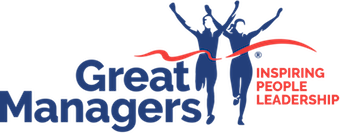5 Ways to Build Emotional Intelligence in Teams
In this lesson we discuss How to Build Emotional Intelligence in Teams (which leads on from the recent MasterClass on Building Trust In Teams)
Emotional Intelligence is a major factor in the levels of success we achieve individually and in teams.
In this short MasterClass, you will learn:
- What Emotional Intelligence is, and why it’s important.
- The 3 Levels of Emotional Intelligence in Teams.
- 5 Ways to Build Emotional Intelligence in Teams.
You can now enrol in this full-length course on Udemy, click here to claim a limited time discount.
[Prefer reading over Videos? Video Transcription Below]
Emotional Intelligence Defined
 What is Emotional Intelligence?
What is Emotional Intelligence?
Daniel Goleman’s definition of Emotional Intelligence is:
“The capacity for recognising our own feelings and those of others for motivating ourselves and for managing emotions well in our relationships.”
He is perhaps one of the most well-known authors and researchers around Emotional Intelligence.
Here’s my own summarised version, that i’ve heard myself using over and over in my 20 years as a leadership consultant:
I describe Emotional Intelligence as:
The ability to manage your emotions intelligently and the ability to skillfully integrate your thoughts and emotions.
Understanding that logic and emotions work best together not in isolation.
EQ is important because humans are primarily emotional…
The basis on which we make sense of our world and the way in which we make decisions is overwhelmingly emotional. We know this from the neuroscience research and looking at the way our brains are wired.
This is an important understanding, because in our modern day workplace we tend to think of ourselves as rational beings. People say things like:
“Leave your emotions out of it!”
or “Don’t get emotional!”
This assumption about being rational can trip us up in our understanding of people, our ability to deal with conflict and challenges and our effectiveness as a leader.
The daily challenge of dealing effectively with humans and emotions is critical to our understanding of other human beings because our brains are hardwired to give emotions the upper hand.
Why Build Emotional Intelligence in Your Team?
Team Emotional Intelligence is more complicated than individual emotional intelligence because teams interact at more levels.
They’re not just interacting with each other they’re interacting with other groups in the organization along with customers, suppliers and other stakeholders.
There are 3 levels of EI competence needed in a team:
- At the individual level
- The team and peer-to-peer level
- The group to group (or cross boundary) level. (The way your team interacts with other teams or groups).
The most important reason to deliberately build Emotional Intelligence in your team is that it will improve team effectiveness.
You’ll get better decisions, you’ll get more creative solutions, you’ll get better relationships and you will get higher productivity. And from that comes improved results.

5 Ways to Build Emotional Intelligence in Your Team
Let’s have a look now at how to build EI in your team.
We’re going to look at some suggested norms from Druskat and Wolff’s research. The things you can do at the individual, team and the cross boundary levels.
You need to take a building block approach when you commence this process… this EI journey.
Every team has its existing norms and you’re going to change some of those patterns. In some cases you’re going to disrupt them and replace them or modify them.
Patterns change in steps so the idea is that you build these norms over time.
Getting buy-in from your team is really important!
As we work through the norms, make a note of the easy wins that you could apply straight away and the things that you might do after you’ve got some foundations in place.
1 – Interpersonal Understanding (Individual Level)
To build interpersonal understanding, take time to get to know each other.
Many teams use tools like the myers-briggs type indicator, the DISC model or strengths inventories to do this.
People really like to to learn about themselves and others so this can be a fun thing to do with your team.
Another suggestion is to check in at the beginning of each meeting. Ask how everyone is feeling… and don’t just settle for the words “good” or “fine” ask for a proper feeling word to help build their emotional literacy.
Many people struggle to identify emotions and this will help them with this. You’re building that literacy of emotions.
You’ve heard me say already today how important this awareness of emotions is.
Assume that undesirable behavior takes place for a reason and find out what that reason is.
Ask effective questions and listen and avoid negative attributions.
Tell your teammates what you’re thinking and how you’re feeling. Don’t be one of those leaders who is hard to read or doesn’t share anything about themselves.
Obviously, you need some boundaries here, i’m not suggesting over-sharing but you won’t get trust if they can’t read you or are not sure about what you’re thinking and feeling.
Encourage self-reflection in your team so that people are thinking about progress against goals, perhaps their wins of the day or week, setbacks and things they appreciate for themselves and about others.
Self-reflection is an important aspect of learning, growth and building resilience.
2- Perspective Taking (Individual Level)
To build the norm of perspective taking, ask if everyone agrees with the decision… and WHY?
Ask quiet members what they think… draw them out if they’re not speaking up.
Or perhaps if they’re just going along with things, question or reality check decisions that come too quickly.
Our first thoughts are not always our best thoughts so ask: “Have we thought this through?”
Appoint a devil’s advocate. Some teams use Edward de Bono’s 6 Thinking Hats in their meetings to generate perspectives. Including the Black Hat which is what might go wrong (or what have we missed) type thinking.
I’ll briefly share an activity that I’ve used with teams to build this norm of Perspective Taking:
This is for when there’s differing views and tension building and people are wedded to their perspective…
The activity is to get people to adopt and advocate for another person’s perspective, as if it was their own. See if they get any mindset shift or insight from doing so, and stepping into someone else’s shoes or views.
It’s been really interesting to do this with some of the teams that i’ve worked with and see the new understandings that emerge.
3 – Team Self-evaluation (Team Level)

We’re moving now to the team/group-level norms that create awareness of emotions.
To Build Team Self-evaluation, schedule time to examine and review team effectiveness.
Ask:
“How are we going?”
“What’s working well?”
“What’s not?”
“What do our results tell us?”
…and be honest with yourselves!
Create measurable objectives… and then make sure you measure them.
These can be task related measures and morale measures too.
Acknowledge and discuss group moods. Some teams use online apps or calendars like Niko Niko as an easy and quick way to help quantify the well-being, morale and motivation in the team.
They’re 3 things that are quite difficult to measure usually, so use the technology that’s available to help you.
Communicate your sense of what is transpiring in the team.
So, what are you pleased about? What could be improved?
Permission or allow team members to speak up in a safe way… perhaps to call a “process check” if something is going off track or on a tangent.
A team member might say “Can i just call a process check… is this the most effective use of our time right now?”
That’s a great example of the team Self-Evaluating.
4 – Seeking Feedback (Team Level)
To build the norm of Seeking Feedback, a suggestion is to encourage team members to invite comments on their work from relevant others, opening themselves up to feedback.
Ask your customers (these could be internal customers or external customers):
“How are we doing? Are your expectations being met?”
Many organisations use surveys to get that sort of feedback.
Another suggestion is that you can benchmark your processes (if you can) so that you’ve got an independent comparison to measure against…
Not everyone can do that, but if you can it’s a good way of getting feedback.
5 – Organisational Understanding (Group-to-Group / Cross-Boundary Level)
Finally, we’ll have a look at a cross boundary norm that creates awareness of emotions: Organisational Understanding.
To build this: find out the concerns and needs of others in the organisation.
Talk to the other groups that you interact with and are dependent on.
What do they need from you?
What’s working well and what’s not?
Too often these conversations are not had and we end up with silos, turf wars and resentment where groups in the same organisation wanting to achieve the same goals criticize each other indirectly and work against each other.
Consider who can influence the team’s ability to accomplish its goals. Identify these key stakeholders but be aware of the culture and politics in the organisation.
You have to be able to read the environment you operate in. Check whether proposed team strategies and actions are in or out of alignment with the organisational culture, or politics or strategies.
Next Steps
These are the five EI norms that build awareness of emotions that you can set up over time in your team…
Don’t try doing these 5 steps all at once but think about them as a great way to plant the seeds for building Emotional Intelligence in your team.
For the full-length course on Building Emotional Intelligence in Teams, enrol in our Udemy course today. Click here for a limited time discount.







